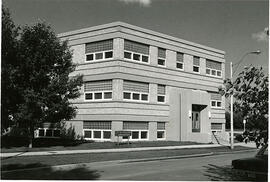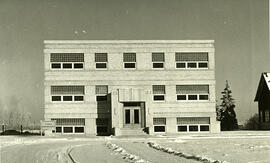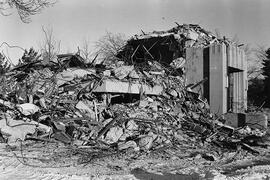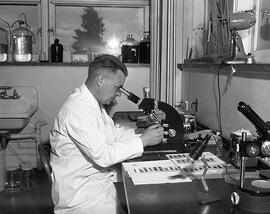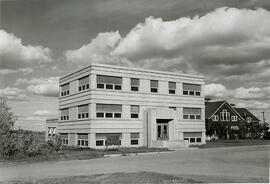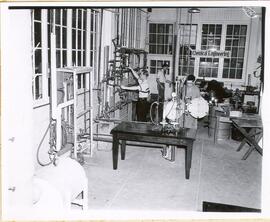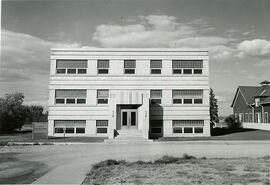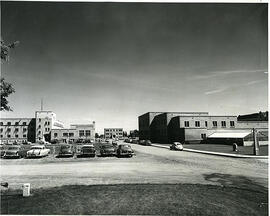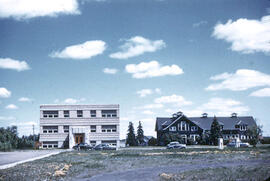J.S. Fulton Labratory - Exterior
- A-5300
- Item
- July 1970
Looking northeast at the J.S. Fulton Lab.
Bio/Historical Note: The Virus Laboratory Building was constructed from 1947-1948, and was designed by the architectural firm of Webster and Gilbert. It was located on what is now a grassy area in front of the Western College of Veterinary Medicine. The construction of the building was financed with proceeds from the sale of the equine encephalomyelitis vaccine. The disease equine encephalomyelitis, more commonly known as "sleeping sickness," first appeared in Saskatchewan in 1935. It recurred in 1937 and 1938, when it killed an estimated 13,000 to 15,000 horses. The vaccine was developed by Dr. Fulton in the late 1930s while he was still head of the Veterinary Sciences Department, and was first sold by the University in 1939. While commercial production companies in the United States were selling a similar vaccine for $1.80 per dosage, the University undersold them at 75 cents – which accounted for all the funding available for construction. Dr. Fulton also demonstrated that a human disease previously diagnosed as non-paralytic poliomyelitis was in fact caused by the same virus, at which time he produced a vaccine for humans. Demolition of the J.S. Fulton Virus Laboratory was completed in 1989.

